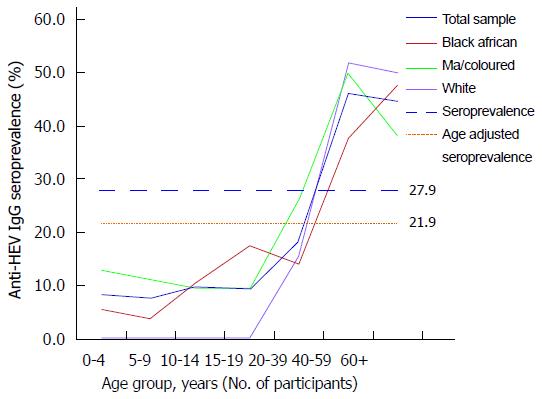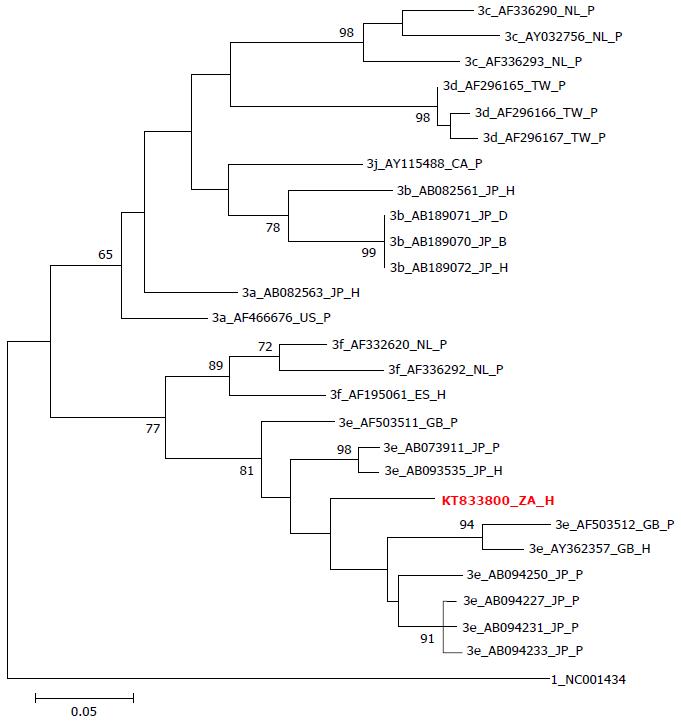Copyright
©The Author(s) 2016.
World J Gastroenterol. Nov 28, 2016; 22(44): 9853-9859
Published online Nov 28, 2016. doi: 10.3748/wjg.v22.i44.9853
Published online Nov 28, 2016. doi: 10.3748/wjg.v22.i44.9853
Figure 1 Overall seroprevalence curve and individual seroprevalence curves in 3 racial groups in Western Cape, South Africa.
Anti-HEV IgG seroprevalence by age in Western Cape, South Africa.
Figure 2 A maximum likelihood tree constructed in MEGA6 from an alignment of a 301nt fragment of ORF2.
Bootstrap support above 60% is shown. Our patient’s viral sequence, GenBank accession KT833800, is highlighted in red. The tree is rooted on the HEV reference sequence (genotype 1). Sequences for comparison have names starting with genotype, followed by Genbank accession number, followed by country ISO 3166-1 abbreviation (CA: Canada; ES: Spain; GB: United Kingdom; JP: Japan; NL: The Netherlands; TW: Taiwan; US: United States of America; ZA: South Africa), and ending in source (D: Deer; H: Human; P: Pig). The patient’s viral sequence clusters within genotype 3 (with subgenotype 3e), in keeping with other viruses recently described in South Africa[11,12,24].
- Citation: Madden RG, Wallace S, Sonderup M, Korsman S, Chivese T, Gavine B, Edem A, Govender R, English N, Kaiyamo C, Lutchman O, van der Eijk AA, Pas SD, Webb GW, Palmer J, Goddard E, Wasserman S, Dalton HR, Spearman CW. Hepatitis E virus: Western Cape, South Africa. World J Gastroenterol 2016; 22(44): 9853-9859
- URL: https://www.wjgnet.com/1007-9327/full/v22/i44/9853.htm
- DOI: https://dx.doi.org/10.3748/wjg.v22.i44.9853














